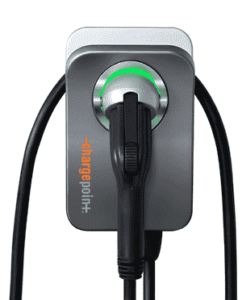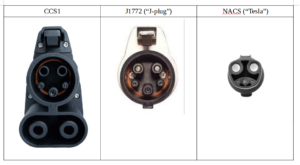 The question presented (and answered) here is “which GL.iNet routers provide VLAN wifi client isolation?” This is likely to be of interest to those who want to set up VLAN protection in their home or small office local area network. The idea would be to relegate relatively untrusted IOT (internet-of-things) devices to a separate VLAN from the main VLAN of trusted devices, but in addition, to isolate the untrusted IOT wifi clients from each other. On this page you can see the results of my actual testing as to which GL.iNet routers provide this isolation feature, and which do not.
The question presented (and answered) here is “which GL.iNet routers provide VLAN wifi client isolation?” This is likely to be of interest to those who want to set up VLAN protection in their home or small office local area network. The idea would be to relegate relatively untrusted IOT (internet-of-things) devices to a separate VLAN from the main VLAN of trusted devices, but in addition, to isolate the untrusted IOT wifi clients from each other. On this page you can see the results of my actual testing as to which GL.iNet routers provide this isolation feature, and which do not.
Replace all four tires?
 Many owners of all-wheel-drive vehicles have had it drummed into their heads that if you find the need to replace one tire, the only correct way to proceed is to replace all four tires. But if your vehicle is a “dual motor” EV, that’s wrong. You can get away with replacing just two tires. See blog article.
Many owners of all-wheel-drive vehicles have had it drummed into their heads that if you find the need to replace one tire, the only correct way to proceed is to replace all four tires. But if your vehicle is a “dual motor” EV, that’s wrong. You can get away with replacing just two tires. See blog article.
The Osborne Effect and Tesla superchargers

Four car makers (Ford, General Motors, Rivian, and now Volvo) have announced that starting about a year from now, their newly manufactured EVs will have a charging port that permits charging at Tesla supercharging stations. This will doubtless trigger the Osborne Effect (blog article).
Volunteers sought for coding a PHP registration status monitor for VOIP.MS
 Update! I now have a status monitor working. See blog article.
Update! I now have a status monitor working. See blog article.
VOIP.MS is my preferred service provider for VOIP telephone service. I am looking for one or two PHP coders to join me in constructing a PHP status monitor for monitoring the registration status of SIP trunks provided by VOIP.MS. Continue reading “Volunteers sought for coding a PHP registration status monitor for VOIP.MS”
Has your Chargepoint Home Flex EV charger lost its green halo?
 Has your Chargepoint Home Flex EV charger lost its green halo, as shown at right? Is the halo white instead of green? If so, you may find this blog article to be of interest.
Has your Chargepoint Home Flex EV charger lost its green halo, as shown at right? Is the halo white instead of green? If so, you may find this blog article to be of interest.
GM follows Ford in partnering with Tesla supercharger network

General Motors announced today that it will partner with the Tesla supercharging network. This comes on the heels of Ford’s announcement of a couple of weeks ago that it had done so.
You can see a blog article in a writing style much like mine that talks about these developments. It predicts that more US EV makers will follow suit. As time goes on, fewer and fewer cars will use the big, awkward, heavy CCS1 plug for fast charging, if this blog article turns out to be correct.
Proper etiquette for Tesla EV charging

Test your mastery of Tesla EV charging etiquette with this quick quiz. If you arrive at a Tesla supercharging station and three of six charging ports are already in use, as shown in this diagram, where is the polite place for you to plug in? Should you choose the place that is shown as “park here”? The correct answer might not be what you think. Continue reading “Proper etiquette for Tesla EV charging”
Being on Route 66

Route 66 is one of the most famous roads in the US. It originally ran from Chicago, Illinois, through Missouri, Kansas, Oklahoma, Texas, New Mexico, and Arizona before terminating in Santa Monica in Los Angeles County, California, covering a total of 2,448 miles (3,940 km). Established in 1926, by 1938 it became the first highway in the US to be paved along its entire length. Continue reading “Being on Route 66”
A pilgrimage to Path 27
As many readers know, nearly all electrical power transmission lines are three-phase AC (alternating current). When you look up at one of the towers, you see three (or a multiple of three) transmission conductors. In the US there are are only a few direct-current (DC) transmission lines. One of them is called Path 27. I first read about Path 27 about seventeen years ago, when I was writing the patent application that became US patent number 8183714. Recently I was able to do something that I had wanted to do for a very long time — I visited one of the massive ground electrodes for Path 27. Continue reading “A pilgrimage to Path 27”
Supercharging station with lots of plugs

This photo shows a charging station in Baker, California. At left are twelve Electrify America supercharging spots. At right are forty Tesla charging spots. Behind this is a construction area where there will soon be fifty more Tesla charging spots. All of these charging spots are shaded by canopies made of, you guessed it, photovoltaic solar panels. The Tesla charging station also has battery storage. Continue reading “Supercharging station with lots of plugs”
